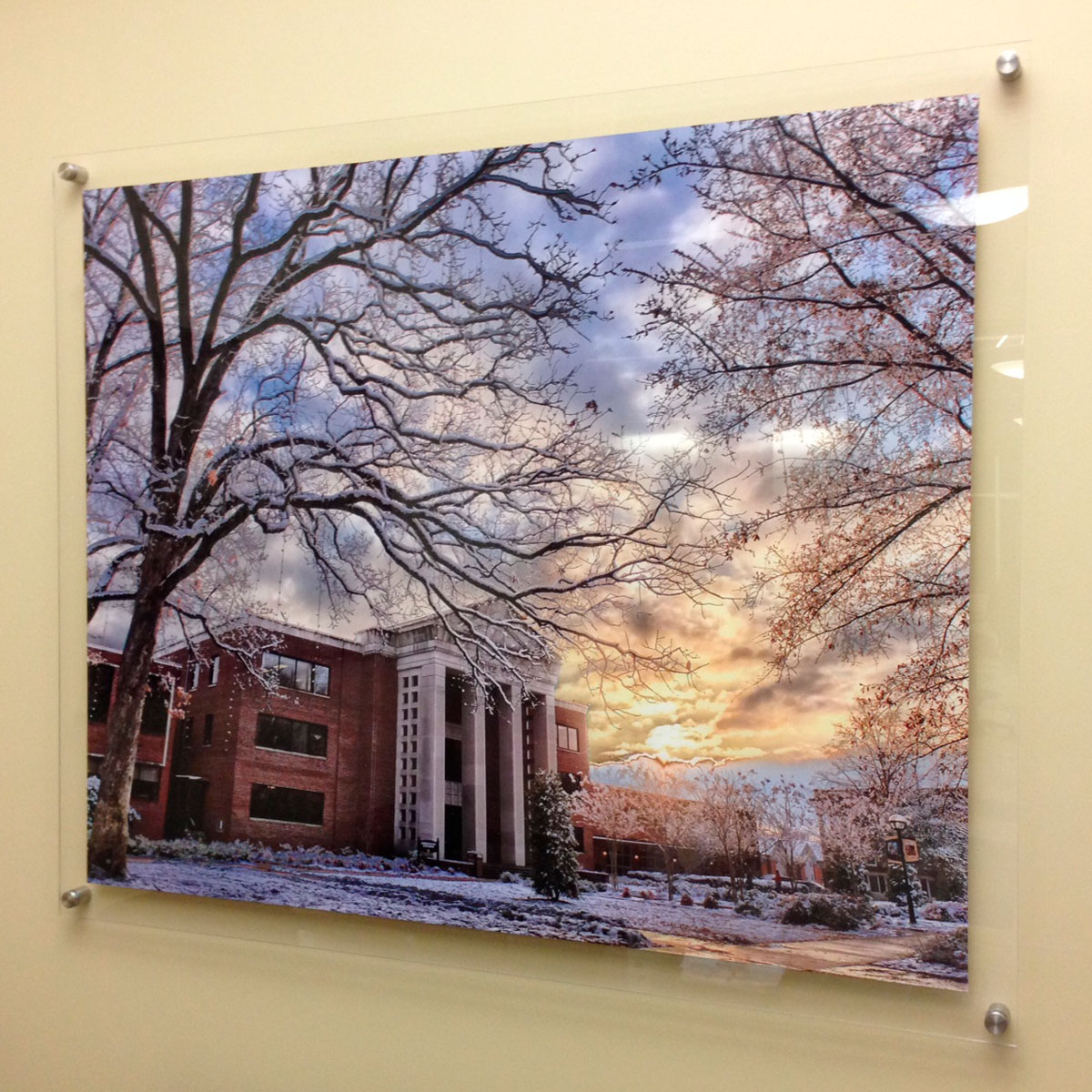
ArtisanHD direct to print acrylic
We offer two types of acrylic prints: direct-to-print and paper mounted, also known as direct-to-substrate printing, and face-mounted photo paper acrylic. There are several key differences between direct-to-substrate acrylic prints and face-mounted acrylic prints. With vastly different printing methods, they each bring their own qualities for you to consider.
Printing Process
This is the most important difference between these acrylic print types. Unique printing machines, inks, and processing methods are used so while the end result will look largely the same, there will be some fundamental differences.
- Direct-to-substrate – This involves printing the image directly onto the acrylic surface using specialized flatbed printers or UV printers that can turn the UV-sensitive ink comprising the image into an acrylic print.
- Photo paper onto acrylic – First the image is printed on high-quality photo paper first and then adhered to the acrylic surface using adhesives or lamination. This process is similar to standard photo paper printing with the added step of attaching it to acrylic.
Image Quality
For most applications, both direct-to-substrate and face-mounted acrylic photos will work beautifully. However, because of the unique printing process, direct-to-substrate prints can have a higher fidelity to the original photograph. High-end art prints in museums or galleries will all typically use direct-to-substrate as their choice in acrylic.
- Direct-to-substrate – Typically provides better image quality and sharpness since the ink is directly absorbed by the acrylic, resulting in vibrant colors and fine details that you won’t see on photo paper.
- Photo paper onto acrylic – This can still produce good image quality, but there might be a slight loss of sharpness due to the additional layer of photo paper.
Durability & Longevity
Part of the allure of plexiglass is that acrylic is a very durable material with all sorts of practical applications in the real world. Scratch and break resistant, either type of acrylic provides a long-lasting option for art prints. But because photo paper may be subject to damage and therefore damage the print, they are seen as less durable than direct-to-substrate prints.
- Direct-to-substrate – Has better durability and longevity as the printed image becomes an integral part of the acrylic surface while retaining scratch, moisture, and break resistance.
- Photo paper onto acrylic – Durable, but the photo paper may be more susceptible to wear and tear over time so you may want to handle it with a little more care.
Thickness & Depth
Art or photos behind acrylic glass create a sense of depth that other art mediums can’t match. You can get acrylic prints with varying levels of thickness to enhance or downplay the feeling of depth while looking at a picture, however, direct-to-substrate printing will provide a greater sense of depth because the image is printed on the acrylic.
- Direct-to-substrate – Maintains the original thickness and depth of the acrylic sheet, giving a three-dimensional appearance to the image as if it’s within a layer of plexiglass.
- Photo paper onto acrylic – Acrylic adds an extra layer between the image and the acrylic, which may reduce the sense of depth and slightly increase the thickness of the print.
Cost
Because of the printing process and added benefits, direct-to-substrate printing will generally be more expensive than printing on photo paper and then mounting it on acrylic. The cost difference is nominal and many consider it to be worth the extra money to get a museum-quality acrylic print.
- Direct-to-substrate – With different printing equipment needed, specialized inks, and a state-of-the-art dye-sublimation process, direct-to-substrate can cost more per square foot to make up for the added expenses.
- Photo paper onto acrylic – The process of printing on photo paper in modern dry lab photo printing studios is much cheaper than direct-to-substrate and the added cost of affixing it to acrylic is minimal.
Should You Choose Direct-To-Substrate or Face-Mounted Photo Paper?
Choosing between direct-to-substrate acrylic prints and photo paper-mounted acrylic prints depends on three main factors, the look of the print, the durability, and the cost. Direct-to-substrate prints excel in image quality, delivering vibrant colors and fine details, making them ideal for high-end art displays. They offer superior durability, seamlessly integrating the image with the acrylic surface for enhanced resistance to wear and tear. However, this quality comes at a higher cost.
Comparatively, photo paper-mounted acrylic prints provide a more budget-friendly option while maintaining satisfactory image quality and durability. Though they may have a slightly reduced sense of depth and require a touch more care, they offer a compelling compromise between cost and visual appeal.
The decision ultimately hinges on your specific priorities: opting for direct-to-substrate when pursuing top-tier quality and long-term investment, and selecting photo paper-mounted prints for a more economical choice that still delivers on aesthetics and endurance.

